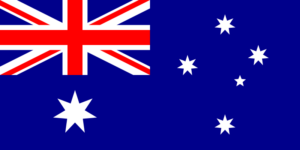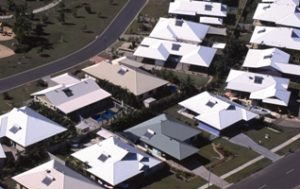“There has been a Lot of Market Turmoil in Australia”
March 22, 2010
 Solarthermalworld wanted to investigate why the Australian Government decided to discontinue its Solar Water Heater Rebate Programme and conducted an interview with Stephen Cranch, Sales and Marketing Manager of Solahart Industries Pty Ltd Australia.
Solarthermalworld wanted to investigate why the Australian Government decided to discontinue its Solar Water Heater Rebate Programme and conducted an interview with Stephen Cranch, Sales and Marketing Manager of Solahart Industries Pty Ltd Australia.
Photo: Solahart
Cranch provided a short overview of the current market and support scheme situation. Since 2005, the solar water heater expert has been part of the Solahart Team, an Australian flat plate collector and tank manufacturer. Before that, he had been General Marketing Manager at Heatcraft Australia, a major supplier for the refrigeration and air-conditioning sector.
Solarthermalworld: We have recently reported that the Federal Solar Water Heater (SWH) Rebate has been discontinued. What caused this abrupt end?
Cranch: There has been a lot of market turmoil here. Around September last year, the heat pump rebate was reduced to AUD 1,000, because people were installing for free and the market was massively overheated. As a result, REC prices plummeted, which made solar less attractive and the demand started to drop off. The peak for the SWH market was around June till November. In January, the New South Wales rebate was reduced from up to AUD 1,200 to AUD 300.
At the same time, the insulation program had been plagued with some real problems. And therefore, the Federal Government decided to suspend the program on 19 February 2010 and to reintroduce it in June this year. However, for SWHs, which as you know were part of the programme, a new scheme was immediately launched called the Renewable Energy Bonus Scheme and the rebate amount reduced from AUD 1,600 to AUD 1,000, effective from 20 February 2010.
Solarthermalworld: In 2009, market volume almost doubled and reached its peak around June/July 2009. Was the market volume pushed by the Federal Solar Water Heater Rebate?
Cranch: In February 2009, the Federal Government increased the national solar hot water rebate from AUD 1,000 to AUD 1,600 and removed the requirement for means testing, which was previously only available to householders earning a combined income of AUD 100,000 or less. This was bundled up with free home insulation as part of the federal government stimulus package in the midst of the global financial crisis.
Solarthermalworld: Insulation and solar water heaters are not usually combined in one and the same incentive programme. How did that work?
Cranch: You could only claim the SWH rebate when replacing an electric water heater and proving that you had not had free insulation installed. For instance, householders could have free insulation up to AUD 1,600 or the AUD 1,600 SHW rebate. Insulation was provided free to householders without money changing hands, whereas with SWHs, the householder still had to pay the up-front cost and wait 2 to 3 months for the rebate to come back after sending the paperwork in.
This was on top of the Renewable Energy Certificates (RECs), which are linked to the 20 % renewable energy target by 2020. 1 REC is 1 MW of electricity generated or displaced over a 10-year period. The value of each REC is determined by market factors, for instance: the current value around 33 AUD/ REC, multiplied by the number of RECs per system – lets say 30 – is AUD 990. Additionally, some other state rebates where available, such as the New South Wales rebate, which was up to AUD 1,200. Those rebates and RECs are available for heat pumps and solar water heaters.
Solarthermalworld: How would you assess the current state of the SWH market?
Cranch: Now, it's significantly down from the numbers in 2009. In summary, the market is a lot tougher now than 12 months ago. It peaked at around 200,000 SWH systems, including a large number of heat pumps, but has come back significantly from these numbers.
The interview was conducted by communication specialist Hanna Schober based in South Africa.
Schober@solrico.com


